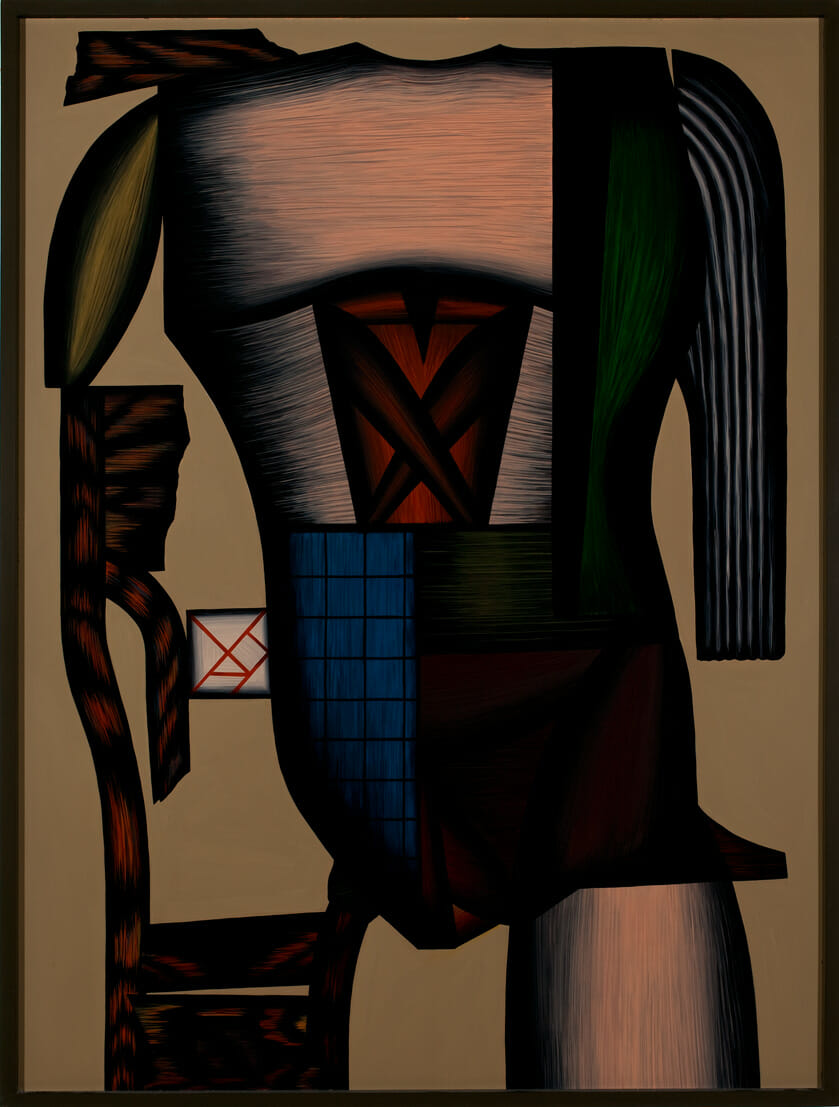
Christina Ramberg
Born: 1946 (Fort Campbell, KY, United States)
Died: 1995 (Chicago, IL, United States)
Her father’s military career took Christina Ramberg and her family to live briefly in Japan and Germany, as well as Kansas and Virginia, before settling in Highland Park, IL, an hour north of Chicago. Ramberg completed her bachelor’s and master’s degrees at the School of the Art Institute of Chicago (SAIC) in 1968 and 1973 respectively. SAIC was Ramberg’s home for the rest of her career; she became a faculty member and eventually the chair of SAIC’s Drawing and Painting Department. Concurrently, she became an avid collector of objects she found intriguing, notably amassing a collection of 350 dolls that she displayed on the walls of her apartment. She also kept scrapbooks in which she collected an inventory of images, including comic book panels and gruesome medical illustrations.
A sale of six-inch-square panels of Masonite in the campus supply store where Ramberg worked as a student created a productive entry point. The modestly sized Masonite squares inspired her to paint a series of paintings focused on hair textures and presented like assorted chocolates. Around the time she completed her bachelor’s degree, Ramberg was included in the False Image group exhibitions at the Hyde Park Art Center along with her fellow SAIC graduates Roger Brown, Philip Hanson, and Eleanor Dube.
Though she continued to paint on Masonite, Ramberg’s works began to grow in scale. In the early 1970s, her paintings featured closely cropped images of women in luxuriously detailed lingerie. Within a few years, her figures became increasingly fragmented, only defined by wrappings expressing a hair-like texture. The precision of her paintings was supported by extensive preparatory studies; these studies themselves have since been recognized as significant works.
Of her lingerie renderings, Ramberg said: “One thing I’ve always been interested in about clothing is that it can talk a lot about the body. Whether about the outside or the inside, too.” At the time of her first exhibitions, Ramberg’s anonymous figures were read as fetishistic studies of the female body, but by the time of her retrospective at the Renaissance Society, in 1988, critics interpreted her body of work as studies in objectification and the artifice of modern beauty culture.
Well known for her height and her warmth, Ramberg often joked about her inability to find clothes and shoes that fit her form. She became a nimble seamstress as well as a dedicated quilter. In the early 1980s, Ramberg stepped away from painting and immersed herself in quilting. The medium allowed her the opportunity to contemplate complex ideas outside the realm of paint. Perhaps it was the structured geometry of quilting, as well as the electrical grid towers seen in cross-country travels by car, that inspired her “satellite paintings” of the mid-1980s, which depicted grid structures on a scumbled black background. This would be Ramberg’s final experimentation with form before her death in 1995, and demonstrates a truncated turn into new territory.











